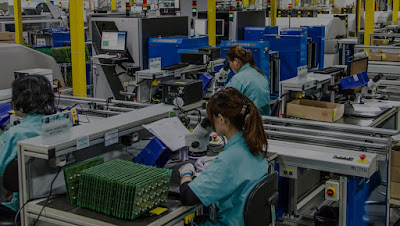A Beginner's Guide to RFID Integrated Circuits
In the realm of modern technology, Radio-Frequency Identification (RFID) has emerged as a revolutionary solution for various applications, offering seamless tracking, identification, and data collection capabilities.
At the heart of RFID technology lies the RFID Integrated Circuit, a small yet powerful component that drives the functionality of RFID systems.
Understanding RFID Integrated Circuits
What is an RFID Integrated Circuit?
RFID Integrated Circuits, often referred to as RFID chips or tags, are electronic devices that store and transmit data wirelessly through radio waves. These circuits play a pivotal role in enabling RFID systems to identify and track objects, animals, or even people.
How RFID Integrated Circuits Work
The functionality of RFID Integrated Circuits revolves around the communication between a reader and the RFID tag. When the RFID tag is within the range of the reader, electromagnetic waves are used to transfer data between the two components. This process allows for quick and efficient identification without the need for direct contact.
Components and Types of RFID Integrated Circuits
Components of RFID Integrated Circuits
Antenna: The antenna is a crucial part of the RFID circuit, responsible for transmitting and receiving signals.
Microchip: This component stores data and manages communication with the RFID reader.
Substrate: The substrate provides a physical foundation for the circuit components.
Types of RFID Integrated Circuits
Passive RFID Chips: These chips rely on the energy emitted by the RFID reader to transmit data. They are cost-effective and widely used for tracking purposes.
Active RFID Chips: Equipped with a power source, active RFID chips can transmit data over longer distances and offer real-time tracking capabilities.
Semi-passive RFID Chips: Combining features of both passive and active chips, semi-passive chips use a battery for onboard processing but rely on the reader for communication.
Applications of RFID Integrated Circuits
In Logistics and Supply Chain
RFID Integrated Circuits play a vital role in optimizing logistics and supply chain management by enabling real-time tracking of inventory, reducing errors, and enhancing overall efficiency.
In Access Control Systems
From key cards to secure facility access, RFID Integrated Circuits provide a secure and convenient solution for access control systems in various industries.
In Healthcare
RFID technology is employed in healthcare for patient identification, tracking medical equipment, and ensuring the integrity of pharmaceutical supply chains.
Choosing the Right RFID Integrated Circuit
Considerations for Selection
Frequency: RFID chips operate at different frequencies, and the choice depends on the application's requirements.
Read Range: Evaluate the required distance between the RFID reader and the tag for seamless operation.
Memory Capacity: Depending on the data storage needs, choose an RFID chip with an appropriate memory capacity.
Challenges and Future Trends
Challenges in RFID Technology
Security Concerns: Ensuring the security of data transmitted via RFID remains a persistent challenge that demands ongoing advancements.
Standardization: The lack of universal standards can pose interoperability challenges in RFID systems.
Future Trends in RFID Technology
Miniaturization: Expect continued efforts to make RFID Integrated Circuits smaller and more versatile.
Integration with IoT: RFID technology is likely to integrate more seamlessly with the Internet of Things (IoT), enhancing connectivity and data analytics capabilities.
Conclusion
As we navigate the world of RFID technology, understanding the fundamentals of RFID Integrated Circuits is essential. From their components and types to applications and selection criteria, this beginner's guide provides a solid foundation for anyone venturing into the fascinating realm of RFID technology.
FAQs
Q: Can RFID Integrated Circuits be reused?
- A: It depends on the type of RFID chip. Passive chips are generally one-time use, while active and semi-passive chips can be reused.
Q: Are RFID Integrated Circuits safe for use in healthcare applications?
- A: Yes, RFID technology is widely used in healthcare for patient safety, equipment tracking, and supply chain integrity.
Q: How do I know which frequency of RFID chip to choose?
- A: The choice depends on factors like the required read range and potential interference. Consult with RFID experts for guidance.
Q: Are there privacy concerns associated with RFID technology?
- A: While RFID technology has privacy considerations, advancements in encryption and security measures are addressing these concerns.
Q: Where to buy RFID Integrated Circuits?
- A: You can try Chipsmall, which is a famous global electronic components distributor that still selling RFID IC with a good price.


Comments
Post a Comment